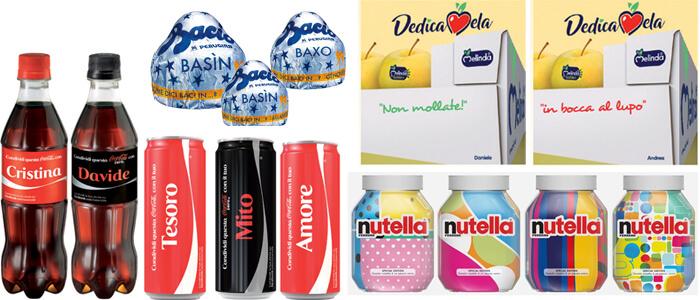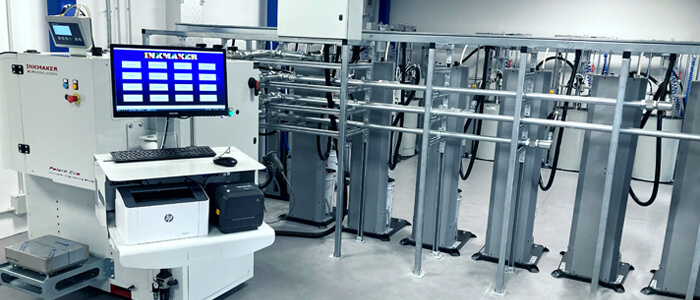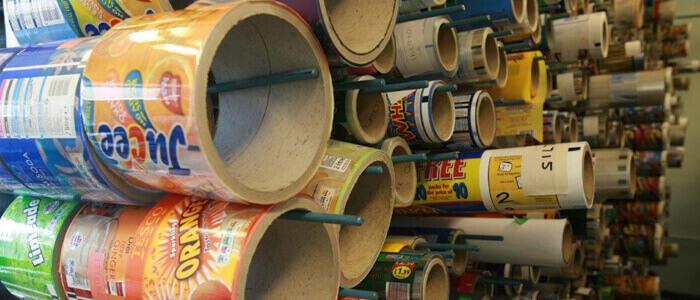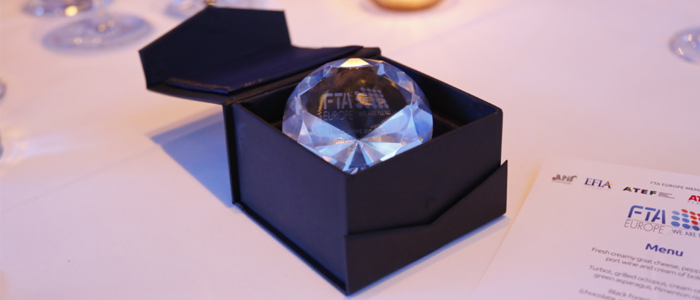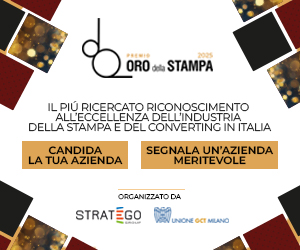Ideas and developments for personalized packaging for discussing in the industry and finding more, with increasing performance and industrialization.
Smart packaging is the term that is increasingly that most often associated with the innovation concept of a product’s container. In the five issues of Converting 2017, in our online news bulletin and in reports on the conferences and stops along the roadmap to Print4All 2018, we have often recounted how brand owners, converters and manufacturers must respond above all to the phenomenon of mass personalisation, which is pushing producers of consumer goods to invest in campaigns that make use of innovative packaging, with the aim of enhancing consumer engagement and thereby increasing demand. They have managed to do that by making use of technologies, data and information management capabilities that transform packaging into an information sharing platform and a link between products, consumers and business. We will conclude this journey by citing a few inspirational and groundbreaking ideas developed by brand owners and printers, because we are still in the early stages and because, as Alberto Palaveri put so well in his report on the 2017 Print4All Conference, the real innovation does not lie in the technologies themselves – which are already there – but in the capacity for developing industry-wide projects that can be scaled up to respond to the demands of the new economy. Only through a dialog that includes the entire value chain can such demands be satisfied and translated into concrete projects, and only if industry players learn from the example of those solutions that have garnered the market’s approval.
Muesli
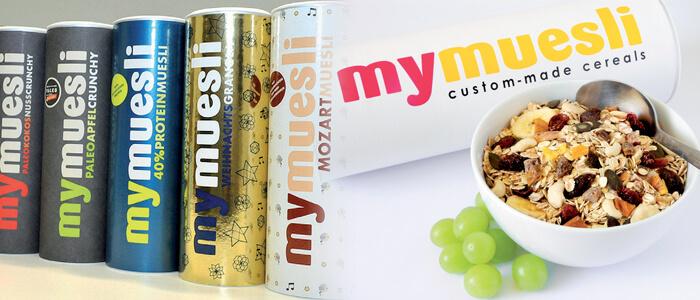 The protagonist in this story is a pool of enterprises with vastly disparate competencies but the same propensity for innovation. At the heart of the project is an idea developed by mymuesli, a German specialist in the production and marketing of organic cereals that currently has thirty or so single brand stores in Germany, Austria and Switzerland. Founded as a startup in 2007, mymuesli has managed to build an alternative business model based on the personalization of its offer. Customers can create their own personal mix of grains and then personalize the packaging itself. How do they do it? Through an (instore) service based on a specially developed web-to-print platform and a latest generation inkjet printing system. Mymuesli involved Longo and Heidelberg in the project. Longo, a printer based in Alto Adige and specialized in supplying web-based solutions, was entrusted with developing and implementing the tool that enables creating personalized contents – using ad hoc interfaces, layouts and skins – and properly preparing the print files. Using a special tablet, customers can divert themselves designing their own packaging right in the store. The print file provided by the online platform is then sent to the printer (Heidelberg’s innovative Jetmaster Dimension, which can print directly on three-dimensional objects), which decorates the packaging on-site. While the system is printing the packaging (in just minutes), the customer proceeds to selecting the mix of grains of their choice.
The protagonist in this story is a pool of enterprises with vastly disparate competencies but the same propensity for innovation. At the heart of the project is an idea developed by mymuesli, a German specialist in the production and marketing of organic cereals that currently has thirty or so single brand stores in Germany, Austria and Switzerland. Founded as a startup in 2007, mymuesli has managed to build an alternative business model based on the personalization of its offer. Customers can create their own personal mix of grains and then personalize the packaging itself. How do they do it? Through an (instore) service based on a specially developed web-to-print platform and a latest generation inkjet printing system. Mymuesli involved Longo and Heidelberg in the project. Longo, a printer based in Alto Adige and specialized in supplying web-based solutions, was entrusted with developing and implementing the tool that enables creating personalized contents – using ad hoc interfaces, layouts and skins – and properly preparing the print files. Using a special tablet, customers can divert themselves designing their own packaging right in the store. The print file provided by the online platform is then sent to the printer (Heidelberg’s innovative Jetmaster Dimension, which can print directly on three-dimensional objects), which decorates the packaging on-site. While the system is printing the packaging (in just minutes), the customer proceeds to selecting the mix of grains of their choice.
Coca-Cola
 Personalized cans of Coke were the first example of personalization (actually clusterization in this case) to win over consumers, generating a lot of excitement and interest in solutions that bring emotion into the act of purchasing a product. In Coca-Cola’s case, personalizing the packaging was just the beginning of a series of increasingly specialized marketing campaigns aimed at engaging the consumer at the moment of purchase (but about the packaging more than the product itself), developing a range of print solutions for the purpose. These ranged from cans and bottles bearing a name, pet name or song lyric to those involving the creation of unique images on each and every packaging, made using special software (Mosaic) that creates print files with an infinite variety of graphic combinations.
Personalized cans of Coke were the first example of personalization (actually clusterization in this case) to win over consumers, generating a lot of excitement and interest in solutions that bring emotion into the act of purchasing a product. In Coca-Cola’s case, personalizing the packaging was just the beginning of a series of increasingly specialized marketing campaigns aimed at engaging the consumer at the moment of purchase (but about the packaging more than the product itself), developing a range of print solutions for the purpose. These ranged from cans and bottles bearing a name, pet name or song lyric to those involving the creation of unique images on each and every packaging, made using special software (Mosaic) that creates print files with an infinite variety of graphic combinations.
Nutella
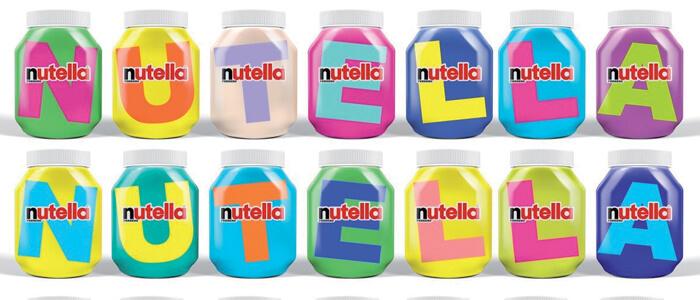 Ferrero has also demonstrated the phenomenal possibilities of this marketing tool. The Piedmontese company has launched multiple campaigns that fostered engagement through different levels of personalization: a person’s name, a geographic cluster (the “dialect’s campaign” made use of the distinctive identity of Italy’s local dialects) and packaging graphics. Its efforts were always well-rewarded. In the first names campaign, for example, one of the most exciting outcomes was the online engagement of consumers that could not find a jar with their name on it at the store and so turned to the special online service, which took orders and delivered directly to the consumer a jar with a digital label bearing their name. On the other hand, with the packaging with personalized graphics (also using Mosaic software), the average price per jar exceeded that of the traditional packaging by one euro.
Ferrero has also demonstrated the phenomenal possibilities of this marketing tool. The Piedmontese company has launched multiple campaigns that fostered engagement through different levels of personalization: a person’s name, a geographic cluster (the “dialect’s campaign” made use of the distinctive identity of Italy’s local dialects) and packaging graphics. Its efforts were always well-rewarded. In the first names campaign, for example, one of the most exciting outcomes was the online engagement of consumers that could not find a jar with their name on it at the store and so turned to the special online service, which took orders and delivered directly to the consumer a jar with a digital label bearing their name. On the other hand, with the packaging with personalized graphics (also using Mosaic software), the average price per jar exceeded that of the traditional packaging by one euro.
Baci Perugina
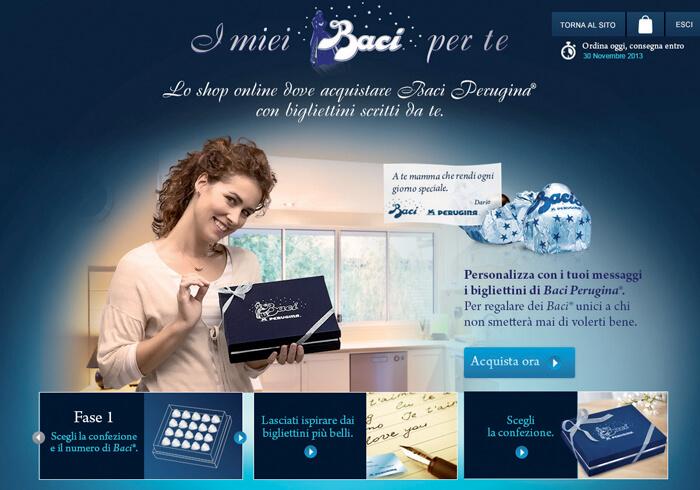 These iconic chocolate “kisses” traditionally feature love notes that one reads before discarding the packaging. For the age of personalization this distinctive hook has been enhanced with the marketing campaign “My kisses for you”. By logging on to the Baci Perugina digital store, consumers can personalize the note in the chocolate’s wrapper to make a gift that is unique in the proper sense of the term. Once the customer has sent the sentences to be printed on the transparent slip of paper, the individual notes are made and packed in the classic 4-, 10- or 30-piece tubes. The initiative, still in an experimental phase and to be perfected in terms of managing print volumes, has enabled the concern to raise the retail price considerably. A tube of 10 Baci kisses is now sold for 30 euro, five times more than those with the usual packaging.
These iconic chocolate “kisses” traditionally feature love notes that one reads before discarding the packaging. For the age of personalization this distinctive hook has been enhanced with the marketing campaign “My kisses for you”. By logging on to the Baci Perugina digital store, consumers can personalize the note in the chocolate’s wrapper to make a gift that is unique in the proper sense of the term. Once the customer has sent the sentences to be printed on the transparent slip of paper, the individual notes are made and packed in the classic 4-, 10- or 30-piece tubes. The initiative, still in an experimental phase and to be perfected in terms of managing print volumes, has enabled the concern to raise the retail price considerably. A tube of 10 Baci kisses is now sold for 30 euro, five times more than those with the usual packaging.
Melinda
 Sometimes personalization is also an opportunity for sustainability. Such is the case with the campaign launched by Melinda to pair the sale of its products with a unique charity initiative that involved the use of personalized packaging. Melinda put aside 90,000 euro to support a number of families affected by the earthquake that recently hit central Italy. The money was raised through the #DedicaMela campaign, which also used social networks to collect thousands of messages of support and affection. Here’s how it works: for every dedication shared, Melinda donated one euro to a fund supporting families of fruit growers in the affected areas. Using an advanced digital press, the Valtellina-based converter Ghelfi Ondulati printed the dedications submitted online on packages of Melinda apples for distribution. In this inspirational story, the use of digital printing technology transformed the apple crates into a vehicle for messages of solidarity, and they proved very popular. In two months over 2 million #DedicaMela custom packs of Melinda apples were sold.
Sometimes personalization is also an opportunity for sustainability. Such is the case with the campaign launched by Melinda to pair the sale of its products with a unique charity initiative that involved the use of personalized packaging. Melinda put aside 90,000 euro to support a number of families affected by the earthquake that recently hit central Italy. The money was raised through the #DedicaMela campaign, which also used social networks to collect thousands of messages of support and affection. Here’s how it works: for every dedication shared, Melinda donated one euro to a fund supporting families of fruit growers in the affected areas. Using an advanced digital press, the Valtellina-based converter Ghelfi Ondulati printed the dedications submitted online on packages of Melinda apples for distribution. In this inspirational story, the use of digital printing technology transformed the apple crates into a vehicle for messages of solidarity, and they proved very popular. In two months over 2 million #DedicaMela custom packs of Melinda apples were sold.
Parmalat
 The Parmalat Group also experimented with personalization techniques for a special Christmas edition of yogurt featuring packaging bearing images of Walt Disney characters. The campaign was part of a marketing strategy intended to establish an emotional link with the consumer, in this case families with small children. In addition to the Disney character, each packaging presented a collectible perforated die of either a Christmas ball or a place card for children to play with over the holidays.
The Parmalat Group also experimented with personalization techniques for a special Christmas edition of yogurt featuring packaging bearing images of Walt Disney characters. The campaign was part of a marketing strategy intended to establish an emotional link with the consumer, in this case families with small children. In addition to the Disney character, each packaging presented a collectible perforated die of either a Christmas ball or a place card for children to play with over the holidays.

